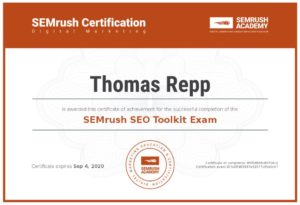
Let’s cut to it: AI isn't the problem in your mid-size B2B industrial company. The real culprit that's choking your progress isn't tech-related at all ... it's your internal governance. Or more accurately, the complete lack of it. That silent killer is sitting between your dusty org chart and that AI webinar your VP of Marketing watched last quarter.
AI strategies for B2B industrials aren't failing because the tech is too complex or too expensive. They fail because no one inside your company owns it, steers it, or knows how to ask the right questions in the first place. You're not alone. Most mid-size industrial players are stuck in this weird limbo where they know AI matters ... but can't make it stick.
The Opportunity: A Gaping, Wide-Open Frontier
Before we start throwing elbows, let’s acknowledge something: this market is underserved. Grossly. The B2B industrial space ... especially in the $10M to $1B range ... is decades behind in digital maturity. That’s not just a problem; it’s an outrageous opportunity. Early adopters are carving out digital moats so wide and deep their competitors may never catch up. Brand visibility, lead flow, search dominance ... AI is your leverage point to make it all happen.
But if you want to win, you have to build the foundation first. And that foundation starts with internal governance.
What Does Governance Even Mean?
Let’s define it simply: governance is your internal system of ownership, accountability, and decision-making around AI. It answers questions like:
- Who owns AI initiatives?
- How are we tracking their performance?
- How do we ensure AI outputs align with brand voice, customer needs, and operational goals?
- What tools are allowed, and what’s the process for onboarding them?
- Who is steering this ship so it doesn't crash into legal, ethical, or brand disasters?
Most mid-size B2Bs have none of this in place. Why?
Because you're not wired that way. You’re experts in tolerances, torque, and throughput ... not predictive models or algorithmic guardrails. But now you’re flirting with AI without a structure to handle it. That’s like handing the intern the keys to your CNC machine and telling him …”just figure it out.”
The Current State: Chaos in a Lab Coat
Here's what AI "strategy" looks like inside most mid-size B2B industrials:
- One rogue marketer using ChatGPT to write emails and blog posts ... unapproved and unchecked.
- Engineers dabbling in AI-based inspection tools without telling IT.
- No documentation. No standard operating procedures.
- Executives nodding along in meetings but having zero idea what AI can or can't do.
It’s duct tape and prayers. Everyone’s experimenting, no one’s in charge, and leadership is hoping it “just figures itself out.”
Why It Matters More Than You Think
AI isn’t just another software tool. It’s transformational. But it’s only valuable when it’s directed, disciplined, and integrated with your core ops.
You want:
- Better lead scoring? AI can do that.
- Predictive maintenance forecasts? Yep.
- Smarter content strategy? Absolutely.
- Automated RFQ handling? Done.
But none of that happens without guardrails. Worse, you could end up with inconsistent messaging, incorrect data, or even serious compliance issues. That shiny ChatGPT-generated blog post may sound slick, but does it actually reflect your industrial expertise or just regurgitate Wikipedia? Do you even know?
The Fix: 5 Governance Moves to Unblock AI
- Appoint an AI Champion (Not a Committee)
Start with a single point of ownership. Not a task force, not a cross-functional council that meets once a quarter. One person. Give them the power to assess tools, vet use cases, and enforce standards. Ideally, this is someone who knows both your industry and the basics of AI. Can be internal or external. The Repp Group often plays this role ... a neutral third party that doesn't care about turf wars, just results. - Audit What You’re Already Using
You’re already using AI ... you just don’t realize it. Run an audit across teams: who’s using ChatGPT, Jasper, Grammarly, maybe HubSpot’s AI features? What’s working? What’s sketchy? Pull it all into one doc. This isn’t about playing hall monitor ... it’s about visibility. - Create Simple AI Use Policies
Yes, this sounds boring. But a 2-page doc that outlines what tools are approved, what data can be fed into them, and what outputs need review will save your butt. Especially when a sales guy uploads a customer list to a sketchy chatbot. Keep it practical, not legalese. - Integrate with Existing Systems
Most mid-size industries have some sort of CRM (hopefully HubSpot) and ERP already in place. That’s your AI backbone. Don’t just pile on AI tools ... tie them into your existing workflows. That’s where HubSpot excels. From automated nurturing to lead scoring, it blends AI into the flow without a tech revolt. - Educate, Don’t Just Delegate
Your shop floor team doesn’t need to become data scientists. But they do need to know what AI can and can’t do. Set up quarterly training. Share examples. Make it part of onboarding. The more your team understands AI, the less they fear it ... and the better their suggestions get.
Bonus Tip: Don’t Wait for Perfection
Here’s the mindset shift: you’re not building a NASA control room. You’re setting up a set of bumpers so your team can experiment without driving off a cliff. Start messy, but start. AI strategies for B2B industrials don’t need to be Fortune 500-perfect ... they just need to be intentional.
What This Looks Like in Real Life
I am aware of a mid-size Midwest-based valve manufacturer that had 10 people using AI tools in 10 different ways. Engineers, marketing, sales ... no cohesion. A consultant stepped in, identified a use case (AI-enhanced lead scoring), picked the right tool (HubSpot + custom triggers), and created a one-page SOP. Within 60 days, lead quality improved by 30% ... without hiring anyone new or buying expensive software.
The key? Governance. Not complexity.
Ever heard of K.I.S.S.?
Final Word: AI Needs a System to Succeed
AI isn’t magic. It’s leverage. But leverage without structure is chaos. If you’re serious about building that digital moat ... dominating your niche, owning search, crushing visibility ... then your AI strategy must be governed, not guessed. That’s how you go from dabbling to dominating.
Mid-size industrial marketers, this is your moment.
Your competitors are either asleep at the wheel or overwhelmed. Be the one that gets organized, gets disciplined, and uses AI to vault past them. The moat is yours to build ... but you need governance to dig it deep.
Want to know more, go to What We Do or Contact Me in the menu above. Or give me at call at 269-375-0349
Author:Tom Repp
A passionate marketer attempting to change the way industrial marketers leverage the web as a growth-oriented, lead generation machine. View all posts by Tom Repp





